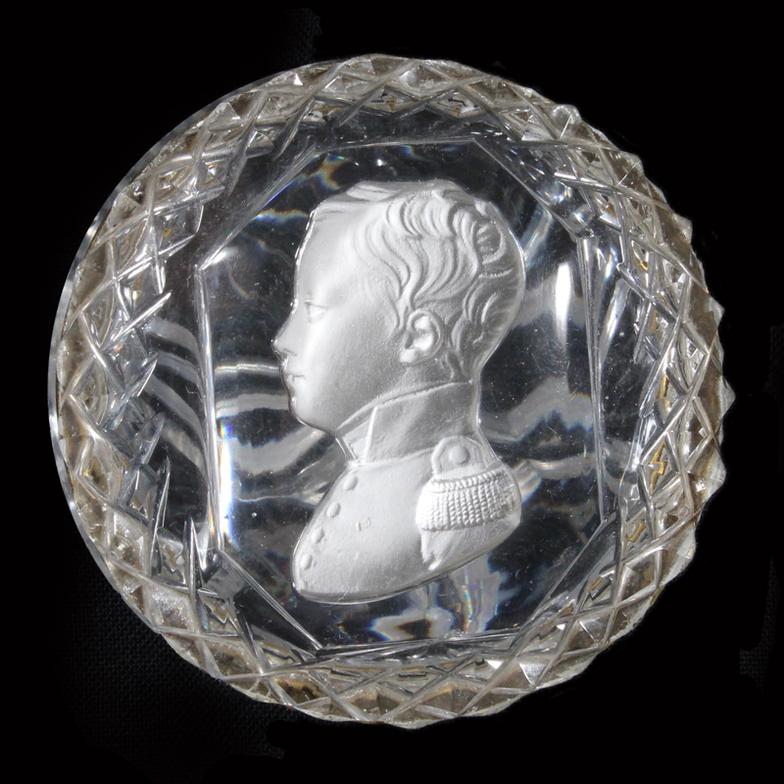images on this website are copyrighted by Papier Presse 2014
These objects take several forms: (a) the inclusion of a sulphide or gold foil incrustation in a goblet or other form (b) a similar form which has a rondel with a patterned millefiori, closepack or lampwork design applied to the surface (c) the whole body of the object is made incorporating spaced millefiori canes, closely set canes, or ribbons and filigree twists, (d) is made like a paperweight with a millefiori or lampwork inclusion, but shaped to form a newel post or mantel ornament, (e) a paperweight with a traditional motif may form the base of a vase, candlestick, hourglass, or similar object.
Excerpted from The Dictionary of Glass Paperweights, Paul H. Dunlop, Papier Presse 2009.
This patch box from the early 1800s has an elaborately cut base and lid. A sulphide of a child in uniform is encased in the lid. During this period it was fashionable to wear "beauty patches", a fake mole, and the elite often had a decorative box on their dressing table to hold the patches.
2 3/8" diameter.
$950.
call (800)227-1996 10AM till 10PM EST M-Sat. to order.
or e-mail us at [email protected]
CLICK ON IMAGE TO ENLARGE


